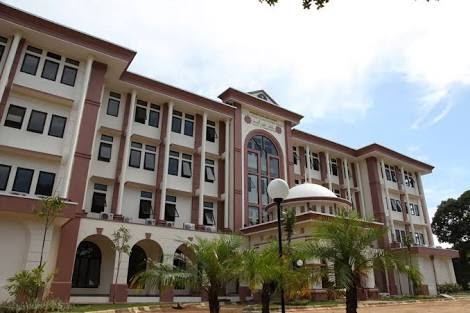CONTENT ANALYSIS OF STUDENTS' ARGUMENTS BASED ON MATHEMATICAL LITERACY AND CREATION ABILITY
ANALISIS ISI ARGUMEN SISWA BERDASARKAN LITERASI MATEMATIKA DAN KEMAMPUAN KREASI
Abstrak
Penelitian ini bertujuan untuk menunjukkan isi argumentasi mahasiswa dalam membangun penalaran kreatifnya dan hubungan antara konten argumentasi dengan kemampuan literasi matematika mahasiswa. Jenis penelitian yang diterapkan adalah penelitian kualitatif deskriptif yang melibatkan 27 siswa SMP di Kota Toli-Toli, Sulawesi Tengah. Instrumen penelitian yang digunakan adalah tes literasi serupa-matematis dan rubrik penilaian. Data yang terkumpul dianalisis menggunakan analisis isi kualitatif yang digunakan untuk menganalisis data teks. Hasil penelitian menunjukkan bahwa 1) Isi argumen mahasiswa dalam membangun penalaran kreatifnya didukung dengan menggunakan pernyataan sederhana, pernyataan yang kompleks, dilengkapi dengan sintaksis atau tanpa sintaksis dalam membangun argumen matematika, dan 2) kemampuan peserta didik untuk menunjukkan argumentasinya dalam pemecahan masalah adalah tingkat kapasitas mereka untuk menafsirkan dan mewakili pengetahuan dan pengalaman belajar mereka yang terkait dengan masalah tersebut. Luas dan dalamnya isi literasi matematika siswa memberi mereka fleksibilitas untuk berdebat. Kemampuan literasi matematika siswa dengan hanya memberikan pernyataan sederhana memiliki keluasan dan kedalaman yang berbeda dengan mereka yang mampu memberikan pernyataan yang kompleks. Begitu juga dengan kelihaian menggunakan sintaksis dalam membangun rencana pemecahan masalah.
##plugins.generic.usageStats.downloads##
Referensi
Anderson, D. D. (2008). The elementary persuasive letter: two cases of situated competence, strategy, and agency. Research In The Teaching Of English, 42(3), 270–314. Retreived from https://works.swarthmore.edu/faceducation/3.
Barnard-Brak, L., Lan, W. Y., & Yang, Z. (2018). Differences in mathematics achievement according to opportunity to learn: A 4pl item response theory examination. Studies in Educational Evaluation, 56(3), 1–7. https://doi.org/10.1016/j.stueduc.2017.11.002.
Budd, R., Thorp, R. K., & Donohew, L. (1967). Content analysis of communications. England: Macmillan.
Carroll, J. B. (1963). A model of school learning. Teachers College Record, 64(8), 723. https://doi.org/10.1177/016146816306400801.
Cogan, L. S., & Schmidt, W. H. (2014). The concept of opportunity to learn (OTL) in international comparisons of education. In Assessing Mathematical Literacy, 207–216. https://doi.org/10.1007/978-3-319-10121-7_10.
Cross, D. I. (2009). Creating optimal mathematics learning environments: Combining argumentation and writing to enhance achievement. International Journal of Science and Mathematics Education, 7(5), 905–930. https://doi.org/10.1007/s10763-008-9144-9.
Cutler, L., & Graham, S. (2008). Primary grade writing instruction: A national survey. Journal of Educational Psychology, 100(4), 907–919. https://doi.org/10.1037/a0012656.
Downe-Wamboldt, B. (1992). Content analysis: method, applications, and issues. Health Care for Women International, 13(3), 313–321. https://doi.org/10.1080/07399339209516006.
Eerde, D., & Galen, F. H. J. (2019). Mathematical investigations for primary schools. Freudenthal Institute, Utrecht University. Retreived from http://www.fisme.science.uu.nl/en/impome/documents/2019_impome_investigations.pdf.
Garcia, F. J., Perez, J. G., Higueras, L. R., & Casabo, M. B. (2006). Mathematical modelling as a tool for the connection of school mathematics. ZDM: Zentralblatt Fur Didaktik Der Mathematik, 38(3), 226–246. https://doi.org/10.1007/BF02652807.
Gilbert, J., & Graham, S. (2010). Teaching writing to elementary students in grades 4–6: A national survey. The Elementary School Journal, 110(4), 494–518. https://doi.org/10.1086/651193.
Graham, M., & Lesseig, K. (2018). Back-pocket strategies for argumentation. The Mathematics Teacher, 112(3), 172–178. https://doi.org/10.5951/mathteacher.112.3.0172.
Hidayat, W, Wahyudin, & Prabawanto, S. (2018). Improving students’ creative mathematical reasoning ability students through adversity quotient and argument driven inquiry learning. Journal of Physics: Conference Series, 948, 12005. https://doi.org/10.1088/1742-6596/948/1/012005.
Hidayat, Wahyu, Wahyudin, W., & Prabawanto, S. (2018). The mathematical argumentation ability and adversity quotient (AQ) of pre-service mathematics teacher. Journal on Mathematics Education, 9(2), 239–248. https://doi.org/10.22342/jme.9.2.5385.239-248.
His, S., Linn, M. C., & Bell, J. E. (1997). Role of spatial reasoning in engineering and the design of spatial instruction. Journal of Engineering Education, 86(2), 151–158. https://doi.org/10.1002/j.21689830.1997.tb00278.x.
Idris, N., & Nor, N. M. (2010). Mathematical creativity: usage of technology. Procedia - Social and Behavioral Sciences, 2(2), 1963–1967. https://doi.org/10.1016/j.sbspro.2010.03.264.
Johnson, G. B. (2013). Student perceptions of the flipped classroom. The University Of British Columbia.
Kondracki, N. L., Wellman, N. S., & Amundson, D. R. (2002). Content analysis: Review of methods and their applications in nutrition education. Journal of Nutrition Education and Behavior, 34(4), 224–230. https://doi.org/10.1016/S1499-4046(06)60097-3.
Kuihara, S. A., Graham, S., & Hawken, L. S. (2009). Teaching writing to high school students: A national survey. Journal of Educational Psychology, 101(1), 136–160. https://doi.org/10.1037/a0013097.
Laycock, M. (1970). Creative mathematics at nueva. The Arithmetic Teacher, 17(4), 325–328. Retreived from https://www.jstor.org/stable/41186201.
Lin, P. J. (2018). The development of students’ mathematical argumentation in a primary classroom t - o desenvolvimento da argumentação matemática por estudantes de uma turma do ensino fundamental. Educação & Realidade, 43(3), 1171–1192. https://doi.org/10.1590/2175-623676887.
Lindkvist, K. (1981). Approaches to textual analysis. Advances in Content Analysis, 9(1), 23–42.
Martin, J., & Martin, J. R. (1989). Factual writing: exploring and challenging social reality. England: Oxford University Press.
McTavish, D. G., & Pirro, E. B. (1990). Contextual content analysis. Quality and Quantity, 24(3), 245–265. https://doi.org/10.1007/BF00139259.
Nadjafikhah, M., Yaftian, N., & Bakhshalizadeh, S. (2012). Mathematical creativity: some definitions and characteristics. Procedia - Social and Behavioral Sciences, 31(1), 285–291. https://doi.org/10.1016/j.sbspro.2011.12.056.
Nasrullah, & Baharman. (2018). Exploring practical responses of m3lc for learning literacy. Journal of Physics: Conference Series, 954, 12007. https://doi.org/10.1088/1742-6596/954/1/012007.
OECD. (2010). Learning mathematics for life: a view perspective from pisa. OECD ILibrary. https://doi.org/10.1787/9789264075009-en.
Scherff, L., & Piazza, C. (2005). The more things change, the more they stay the same: A survey of high school students’ writing experiences. Research in the Teaching of English, 39(3), 271–304. Retreived from https://www.jstor.org/stable/40171667.
Sembiring, R. K., Hadi, S., & Dolk, M. (2008). Reforming mathematics learning in Indonesian classrooms through RME. ZDM: Mathematics Education, 40(6), 927–939. https://doi.org/10.1007/s11858-008-0125-9.
Stacey, K. (2011). The pisa view of mathematical literacy in Indonesia. Journal on Mathematics Education, 2(2), 95–126. https://doi.org/10.22342/jme.2.2.746.95-126.
Taskin, N., & Tugrul, B. (2014). Investigating Preschool Teacher Candidates’ Mathematics Literacy Self-sufficiency Beliefs on Various Variables. Procedia - Social and Behavioral Sciences, 116, 3067–3071. https://doi.org/10.1016/j.sbspro.2014.01.708.
Tesch, R. (1990). Qualitative research—analysis types and software protocols. Amazon: The Falmer Press.
Vinner, S. (1997). The pseudo-conceptual and the pseudo-analytical thought processes in mathematics learning. Educational Studies in Mathematics, 34(2), 97–129. https://doi.org/10.1023/A:1002998529016.
Walter, J. G., & Barros, T. (2011). Students build mathematical theory: Semantic warrants in argumentation. Educational Studies in Mathematics, 78(3), 323–342. https://doi.org/10.1007/s10649-011-9326-1.
Weber, R. (1990). Basic content analysis. SAGE Publications, Inc. https://doi.org/10.4135/9781412983488.
Yackel, E. (2003). Reasoning and proof. In A Research Companion to Principles and Standards for School Mathematics. National Council of Teachers of Mathematics.
##submission.copyrightStatement##
##submission.license.cc.by4.footer##
